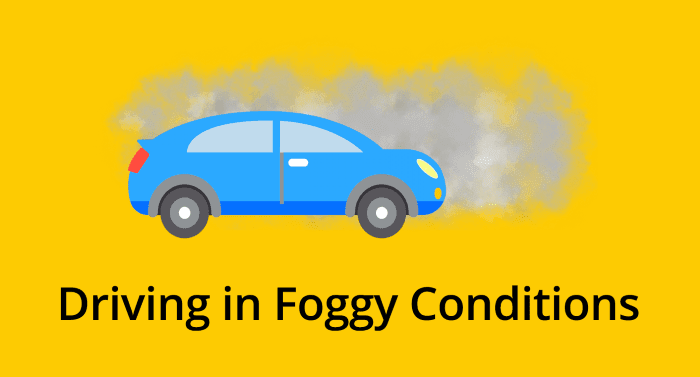It’s important to adapt your driving to whatever weather conditions are at play. Fog can greatly reduce visibility while driving and pose many dangers as a result. In this guide, we’ve laid out the changes you can make to your driving to protect yourself and other road-users when visibility is reduced.
Light up
As well as limiting how far ahead you can see, fog also reflects the light from your car’s headlights back at you, causing a glare. For that reason, it’s important to remember not to use your full-beam headlights in fog, as they can actually make it harder to see in front of you.
When driving in foggy conditions, use dipped headlights and fog lights. Front fog lights are mounted lower down on your vehicle and point downwards. They reflect light onto the road to avoid it shining directly into fog clouds. Standard headlights aren’t angled downwards, hence the glare. Don’t forget to switch off your fog lights when full visibility has returned though, so that you don’t dazzle other road-users. If your vehicle doesn’t have fog lights, use your dipped headlights instead.
Slow down
Slowing down is one of the best things you can do to make your journey safer in adverse weather conditions. Reduce your speed when driving through fog, and leave extra time for your journey. Even if you’re in a rush, don’t be tempted to speed up or avoid precautions. Safety first!
Before you slow down, make sure to check your mirrors to see if there is another vehicle behind you. If there is, remember that it’s much harder to judge the distance between vehicles in foggy conditions. It’s a good idea to tap your foot brake lightly as you slow down, so that your brake lights can alert the driver behind you. When fog improves during your journey, don’t speed up straight away. In patchy fog you might find yourself in poor conditions again very suddenly.
Increase your stopping distance
When visibility is reduced, you should also leave more space between you and other road users. As mentioned, fog can make tail-lights seem further away than they actually are, so keeping a safe distance from whoever’s in front is very important.
The Rules of the Road handbook suggests that on a dry road with good visibility, two seconds should elapse between the vehicle in front passing a landmark and you passing that same landmark. This is the time it takes you to say the phrase, ‘only a fool breaks the two second rule’. In foggy conditions you should repeat this phrase 4 or 5 times in order to gauge how far back you should be from whoever’s in front.
Listen
In very dense fog, it can be a good idea to open your window so that you can listen for other traffic. This can be especially helpful at crossroads and junctions.
Be extra mindful of vulnerable road users
Don’t forget that drivers have a duty of care towards other road-users, including those more vulnerable, such as pedestrians, cyclists, and motorcyclists. If fog is affecting your visibility while driving, look out for pedestrians and cyclists on roadsides and be extra vigilant as you approach pedestrian crossings.










